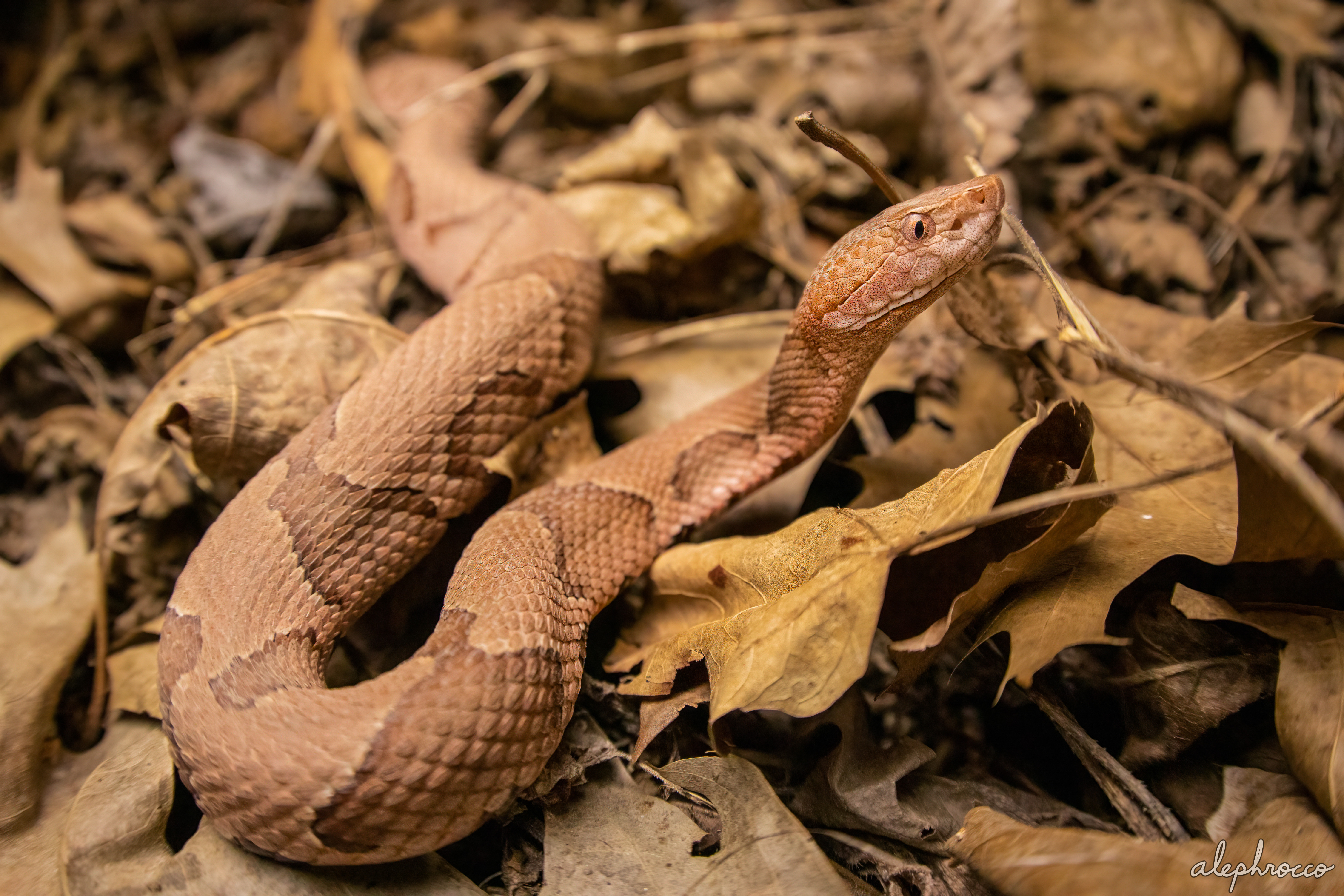
09/29/2021: Eastern copperheads (Agkistrodon contortrix) are versatile ambush predators, preying on frogs, toads, salamanders, skinks, small birds and mammals, and also insects— especially cicadas and large caterpillars. If I’m not mistaken, they may be among the most insectivorous vipers, cicadas making up over a third of their diet in southern populations and arthropods over half. Vipers are well-known to strike and release prey, thereafter tracking their unlucky victim as it succumbs to the venom’s effects. By allowing prey to initially escape, vipers reduce the chance of injury from defensive bites or scratches, but they face the challenge of successfully locating their meal as it stumbles many meters away. Because venom production requires energy and resources, it’s disadvantageous for a snake to envenomate prey and never end up actually consuming it. And in a world full of odors, it becomes difficult to specifically track down the injured animal that has just been bitten. So how might vipers identify and pursue prey that has just been struck?

One idea is that snakes may sample chemical cues from prey during the envenomation process and are able to differentiate odor signatures between prey individuals. There is some evidence to support this hypothesis, but remarkably, many studies have shown that snakes can detect and preferentially track the scent of envenomated tissue (e.g. Crotalus atrox, C. durissus, C. viridis, and the subject of this post, A. contortrix). Imagine striking a vole in a prairie and seeing it run off to the vast network of vole-filled burrows. By chemically tagging the vole when it is struck, snakes can more skillfully navigate toward their desired target to secure their meal. Viperid venoms have commonalities in biochemistry, and my first thought was that vipers may use generic venom compounds to track down prey. Although this may contribute to prey localization, there is still specificity in the chemical “search image” of the venom itself. Copperheads in particular are able to distinguish between prey envenomated by different viper species and even different geographic populations of its own species.
So it turns out that snakes can conduct their own kind of a mark-recapture study, just using a different sensory modality and with a (hopefully) different end goal than those of us who study reptiles. I can’t imagine having such a refined ability to interpret chemical information, and when encountering these vipers in the wild, I can only wonder how they perceive me.



04/10/2021: A beautiful large copperhead ambles up to investigate me, showing off its orange speckled chin and underbelly. The last of the cold spells seems to have passed (fingers crossed!), and it’s wonderful to see snakes catching the last rays of sunlight while I’m out biking the trails. As I weaved from side to side to avoid little Dekay’s brown snakes (Storeria dekayi) and also questionable-looking sticks, it was such a surprise to come across such a large-bodied and unmistakeable species. Cryptic terrestrial snakes, especially those with mottled asymmetrical patches along the body, hold a special place in my heart. Reminiscing back to my time in the tropics, spotting vipers coiled motionless on the forest floor always instilled in me a jolt of excitement and wonder.


